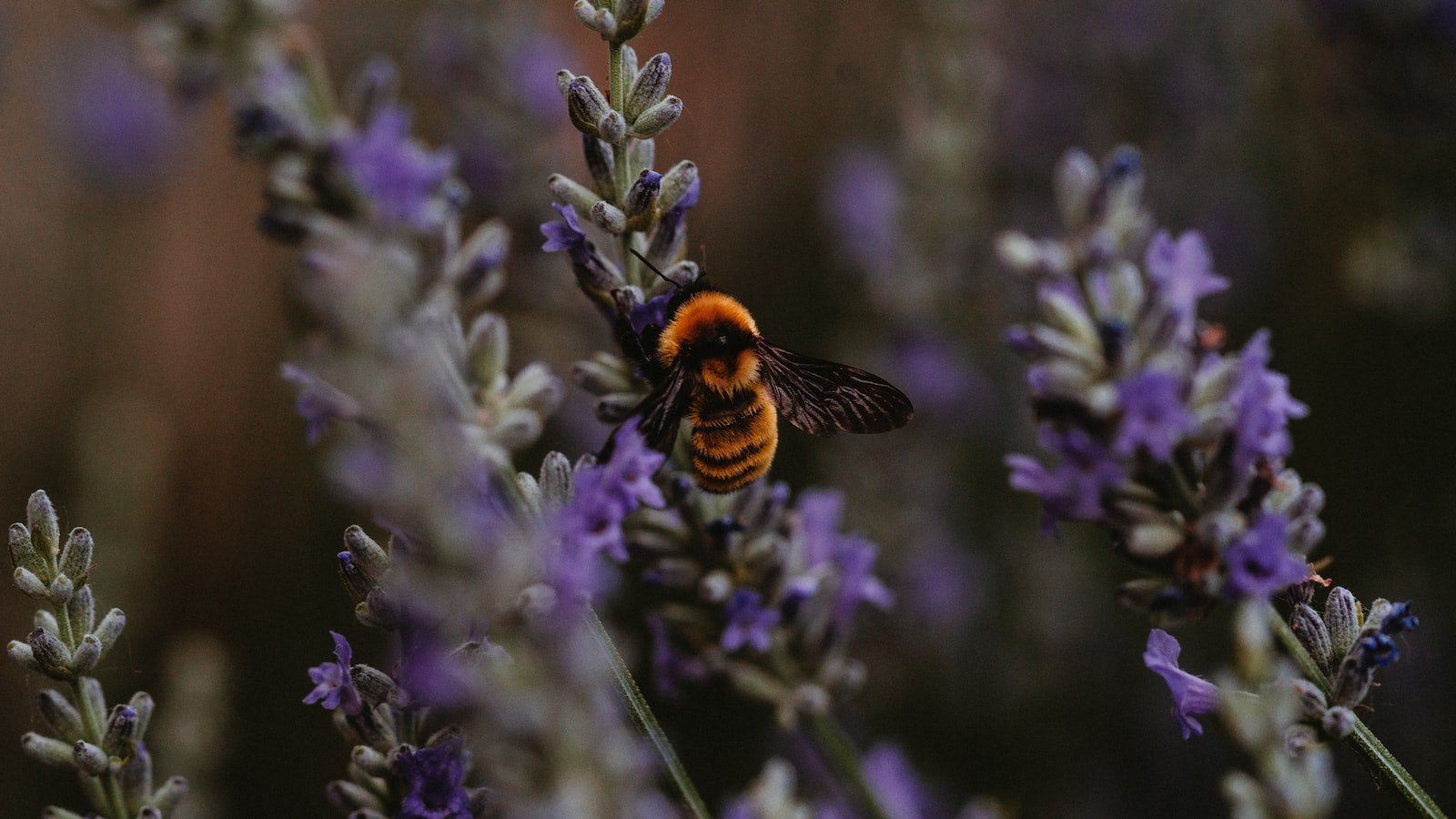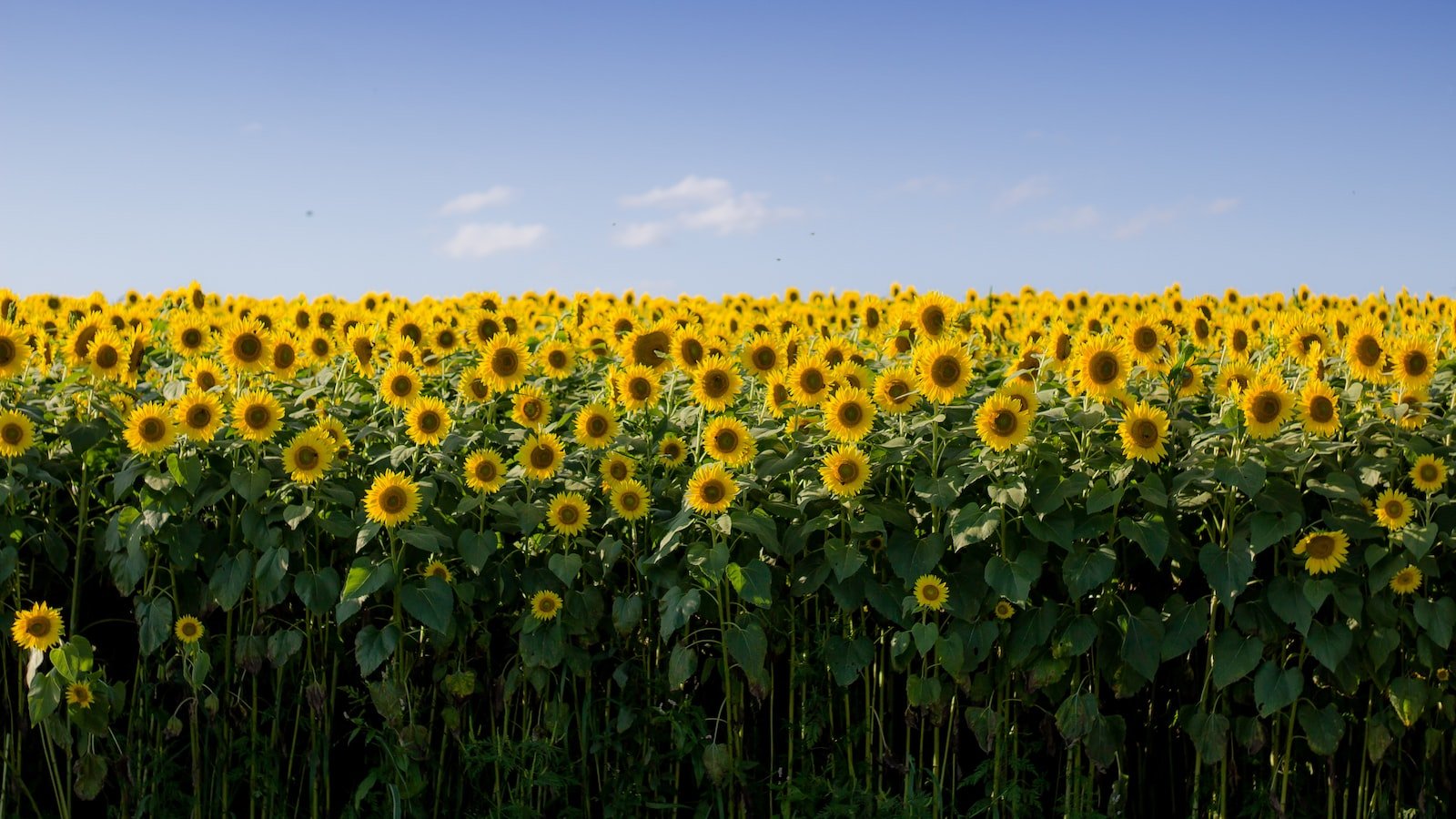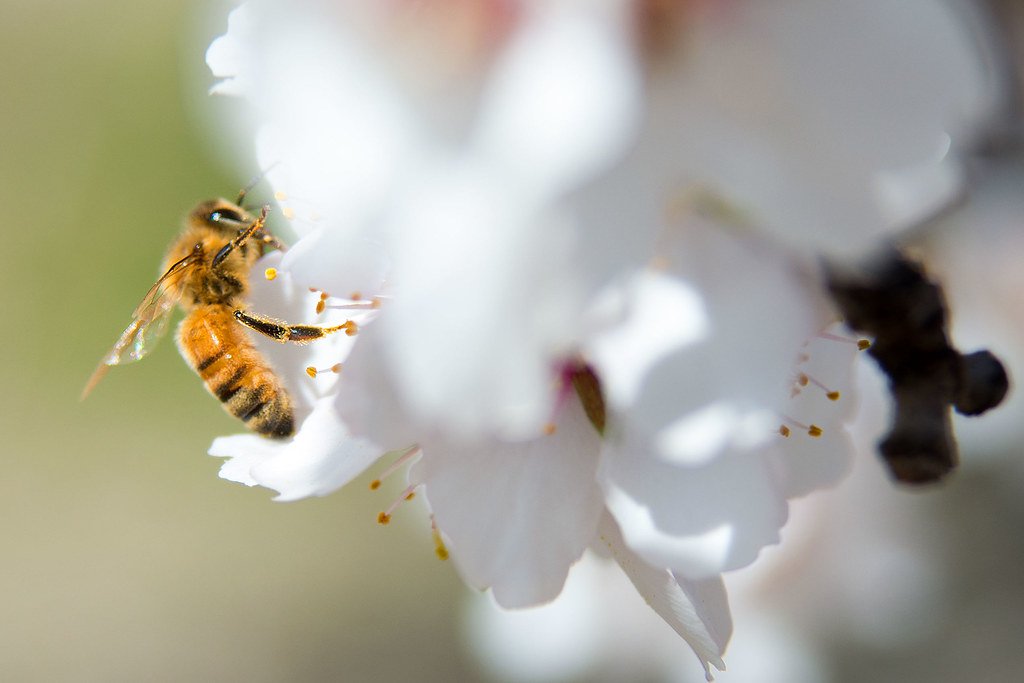As the sun glistens through the countless petals of a blooming meadow, a buzz fills the air, carrying with it a vibrant tapestry of hues. Among the delicate dance of pollination, bees not only play a vital role in sustaining the intricate web of life, but also possess an astonishing ability to utilize color as a powerful form of communication. In this visual guide, we will embark on a mesmerizing journey into the world of bees, uncovering the secrets behind their mesmerizing palette and decoding the complex messages they convey through the language of color. Prepare to witness nature’s own artistic masterpiece, where every stroke of color holds an important meaning, and be captivated by the awe-inspiring realm of bees and their vivid visual communication.
Table of Contents
- The Color Palette of Bee Communication
- Decoding the Color Signals: A Close-up Look into Bee Communication
- Unlocking the Secret Language of Bees: Visual Cues and Meaning
- Enhancing Bee Pollination: Tips for Utilizing Color in Gardens
- Creating Colorful Bee Habitats: Design Tips for Attracting Honeybees
- Q&A
- To Wrap It Up

The Color Palette of Bee Communication
When we think about bee communication, we often envision them buzzing and dancing their way through the air. However, what if I told you that there is a colorful dimension to their communication that we’ve been unaware of? Bees possess a fascinating color palette that plays a significant role in their intricate language.
Just like humans use words to convey messages, bees employ a combination of vibrant colors to communicate with each other. These colors act as signals, helping bees navigate their surroundings and share vital information within their hive. Different shades and patterns assist in conveying diverse messages, each holding its own unique significance.
From the radiant yellows of the flowers they visit to the various hues and designs on their own bodies, bees utilize their color palette in mesmerizing ways. Let’s delve into the intriguing world of bee communication and explore the remarkable meanings behind their vibrant color choices.
- The use of bright yellow indicates the presence of rich nectar sources. Bees alert their fellow hive members to the abundance of food by showcasing this color on their bodies.
- Contrasting black and yellow stripes on bees’ abdomens, accompanied by their buzzing sound, serve as a warning signal, indicating their ability and willingness to defend their colony.
- Symbolizing fertility and health, the color green is often displayed on drones. It signifies their readiness for mating, alerting queen bees to their availability.
- Red, often found on flowers as well as bees’ bodies, acts as a beacon of danger. This hue is employed to caution other bees about potential threats in their environment.
unveils a beautiful and intricate method through which these tiny creatures express themselves. It reminds us that each vibrant shade and pattern holds a valuable message in their complex society, emphasizing the extraordinary language that exists within the bee kingdom.

Decoding the Color Signals: A Close-up Look into Bee Communication
Bees are remarkable creatures known for their intricate social structure and unique modes of communication. One fascinating aspect of bee communication is their ability to convey messages through vivid colors. By utilizing various hues and patterns, bees communicate vital information encoded in these color signals.
Color signals play a crucial role in different aspects of bees’ lives, such as foraging, reproduction, and defending their hives. These signals may serve as a way to identify individuals within the colony, determine their fertility status, or communicate imminent threats. Understanding the intricate language of colors is essential in unraveling the hidden depths of bee society and their extraordinary organization.
Here are some key examples of color signals and their meanings in bee communication:
-
Yellow: Often associated with pollen, yellow signals indicate a rich source of food nearby. These signals help bees efficiently direct their foraging efforts and inform other members of the colony about potential nectar and pollen sources.
-
Blue: Blue signals are often used to distinguish between different members of the colony. For instance, the queen bee may have distinct blue markings to assert her dominance and help bees identify her within the hive.
-
Red: Red signals are frequently observed during periods of danger. Bees may use red coloration to warn others of potential threats or aggressive behavior from predators or nearby colonies.
By honing our understanding of the intricate world of color signals within bee communication, we gain valuable insights into their behavior, ecological interactions, and evolutionary patterns. Decoding these signals brings us closer to comprehending the marvels of their complex society, showcasing nature’s fascinating tapestry of communication.

Unlocking the Secret Language of Bees: Visual Cues and Meaning
Have you ever wondered how bees communicate with each other? It turns out that these tiny creatures have a whole secret language of their own, and it’s all based on visual cues. Through a series of intricate movements and patterns, bees are able to convey important messages to their fellow hive dwellers.
Body Language: Like humans, bees use body language to express their thoughts and intentions. They communicate through an intricate dance known as the “waggle dance.” By waggling their bodies and moving in precise directions, bees indicate the exact location of a food source to their hive members. This complex dance language enables bees to communicate the distance, direction, and quality of the nectar or pollen they have discovered.
Colorful Combinations: Alongside body language, bees also rely heavily on colors to convey meaning. Flowers, for instance, play a crucial role in the visual communication between bees. Bees have a keen sense of color vision and are particularly attracted to vibrant hues. The type and combination of colors on a flower serve as a signal to the bees, guiding them towards the right source of pollen or nectar. From ultraviolet patterns on petals to contrasting shades, each color combination acts as a unique message in the secret language of bees.
Pheromones and Perfumes: While visual cues are essential, bees also utilize pheromones and perfumes to communicate within their hive. These chemical signals, emitted by specific glands on their bodies, convey messages related to colony cohesion, identification of nest mates, and even potential threats. By releasing these subtle odors, bees are able to share critical information and maintain the harmony of their buzzing society.

Enhancing Bee Pollination: Tips for Utilizing Color in Gardens
When it comes to attracting bees to your garden and ensuring efficient pollination, color plays a vital role. Bees are highly visual creatures, and certain colors are more appealing to them than others. By incorporating a variety of vibrant and eye-catching hues, you can create a bee haven that not only delights the senses but also supports these crucial pollinators. Here are some tips for utilizing color in your garden to enhance bee pollination:
- Plant a diverse range of colorful flowers: Bees are particularly drawn to shades of blue, purple, and yellow, so populate your garden with an assortment of blooms in these hues. Think about including flowers like lavender, salvia, sunflowers, and coneflowers to attract bees’ attention.
- Choose plants with long blooming periods: Extend the availability of food sources for bees by selecting plants that flower at different times throughout the growing season. Mix early bloomers like crocuses and primroses with late bloomers such as asters and goldenrods.
- Create color groupings: Consider planting flowers in clusters or blocks of the same color. This makes it easier for bees to locate their favorite blossoms, increases visual impact, and encourages efficient pollination. Create dazzling displays by arranging groups of reds, purples, or yellows in your garden.
Remember, bees are not only essential for maintaining biodiversity but also for our food production. By utilizing color effectively in your garden, you not only enhance its visual appeal but also make it a welcoming space for these industrious pollinators. So, get creative and let colors paint a blooming masterpiece that will attract bees and benefit your garden’s ecosystem.
Creating Colorful Bee Habitats: Design Tips for Attracting Honeybees
Transform your garden into a buzzing oasis by following these design tips that will attract honeybees. Not only will you contribute to the preservation of these critical pollinators, but you’ll also enhance the beauty of your outdoor space with bursts of vibrant colors.
1. Choose a Variety of Blooms: To entice honeybees, opt for a diverse selection of flowering plants. Incorporate an assortment of colors, shapes, and sizes to create a visually appealing and enticing environment for these busy pollinators. From cheerful sunflowers to delicate lavender blossoms, a mix of annuals, perennials, and herbs will keep the bees happy and your garden vibrant.
2. Provide a Water Source: Just like humans, bees need hydration too! Create a shallow water feature, such as a small birdbath or a shallow dish, filled with clean water. Add some pebbles or rocks to provide safe landing spots for the bees to drink. Remember to refill it regularly to keep the water fresh and inviting.
3. Create Nesting Opportunities: Honeybees require suitable nesting sites to thrive. Place bee-friendly houses and hives throughout your garden to provide them with shelter and create a welcoming environment. These can be as simple as small wooden boxes or intricate bee hotels made from bamboo tubes.
4. Avoid Pesticides: It’s essential to avoid using pesticides in your garden if you want to attract honeybees. These chemicals can be harmful to the bees and disrupt their delicate ecosystem. Instead, opt for natural pest control methods, such as companion planting, to keep unwanted insects at bay.
5. Foster Year-round Blooming: Bees require a consistent food source, so aim to design your garden with plants that bloom at different times of the year. This approach ensures a steady supply of nectar and pollen, supporting the bees throughout the seasons and encouraging them to stay in your colorful sanctuary.
By implementing these design tips, you’ll give honeybees a reason to frequent your garden and create a visually stunning space that bursts with life. So, roll up your sleeves, embrace your creativity, and watch as your garden blossoms into a buzzing haven for these vital pollinators.
Q&A
What role does color play in bee communication?
Color is a crucial element of bee communication, used in various ways. Bees can detect and distinguish colors, which helps them recognize and identify different flowers, locate nectar sources, and communicate with other bees within their colony.
How do bees perceive color?
Bees perceive color differently from humans. They have trichromatic vision, meaning they can see ultraviolet light, which is invisible to us. This UV vision allows bees to perceive patterns and markings on flowers that guide them towards the nectar.
What colors are most attractive to bees?
Bees are particularly attracted to colors on the blue and violet spectrum, as these hues appear brighter and more vivid to them. Flowers that display vibrant blue and purple petals are often more successful in luring bees for pollination.
How do bees use color to communicate with each other?
Bees communicate with their hive mates using a dance known as the ”waggle dance.” In this dance, bees use different colors to convey information about the location of food sources. For example, a bee might waggle-dance more energetically when indicating a nectar-rich flower with blue petals.
Do all bees use color in the same way?
Different species of bees have distinct preferences when it comes to color. While some bees are more attracted to certain colors, others may focus on different hues. The evolutionary adaptations and ecological contexts of each species influence how they utilize color in their communication strategies.
Are bees the only insects that use color for communication?
Bees are not the only insects that use color for communication purposes. Other pollinators such as butterflies, beetles, and even some species of flies, also rely on color perception to locate flowers and ensure successful pollination. Color plays a vital role in the intricate web of interactions within the insect world.
To Wrap It Up
As we conclude our colorful journey through the intricate world of bee communication, it is evident that there is much more than meets the human eye. From their dazzling dances to their vibrant flower preferences, bees have perfected the art of using colors to convey messages that often go unnoticed. Delving into their extraordinary visual abilities, we have uncovered the brilliance behind their multicolored ways.
These marvelous creatures have revealed that color is more than just a hue; it is a language, a secret code that binds these miniature marvels together. They paint their world with a kaleidoscope of hues, each shade carrying a distinct meaning that guides their collective existence. What appears to us as an organic palette is, in fact, a vibrant symphony of communication.
From the sunny yellows enticing their comrades to blossom-bursting blues marking pathways home, bees use colors like whispers on the wind. They are masters of a visual dialect that transcends borders and species, allowing them to navigate their environment with astounding precision and grace. Within their intricate colonies, the exchange of knowledge through their chromatic conversations ensures the survival and prosperity of their entire community.
Our visual guide has unveiled the secrets of their chromatic language, elevating the humble bee to a level of sophistication previously unknown. The dazzling patterns they bear and the vivid landscapes they traverse are reminders of the intricate tapestry woven by these tiny, winged beings.
So, next time you find yourself mesmerized by a garden blooming with nature’s vibrant brushstrokes, take a moment to acknowledge the awe-inspiring communication unfolding before your eyes. Remember, just as these bees use color to convey messages, we too can witness the harmony that lies hidden within the kaleidoscope of life.
As an affiliate, my content may feature links to products I personally use and recommend. By taking action, like subscribing or making a purchase, you’ll be supporting my work and fueling my taco cravings at the same time. Win-win, right?
Want to read more? Check out our Affiliate Disclosure page.